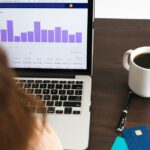The rationale for network security best practices is rooted in the fundamental need to protect sensitive information and ensure the continued availability of network resources. In an era where digital data and communication are the lifeblood of organizations, the potential threats from cyberattacks have never been greater. As a result, network security best practices serve as a proactive shield against these threats. Before we can dive into network security best practices, we need to know what it is. So, what is network security?
Contents
- 1 What is Network Security?
- 2 Top 10 Network Security Best Practices for Organizations
- 2.1 1. Implement a Firewall
- 2.2 2. Regularly Update Software and Systems
- 2.3 3. Enforce Strong Password Policies
- 2.4 4. Access Control and Least Privilege
- 2.5 5. Upskill, Upskill, Upskill
- 2.6 6. Data Encryption
- 2.7 7. Regular Backups
- 2.8 8. Intrusion Detection and Prevention Systems (IDS/IPS)
- 2.9 9. Incident Response Plan
- 2.10 10. Continuous Monitoring and Auditing
- 3 Summary
What is Network Security?
Network security is the practice of safeguarding computer networks and information systems from unauthorized access, cyberattacks, and potential threats. It encompasses a range of measures, technologies, and best practices designed to protect the integrity, confidentiality, and availability of network resources. Network security aims to maintain the confidentiality of sensitive information, the integrity of data, and the uninterrupted availability of network services. It therefore plays a vital role in ensuring that organizations can operate securely in the digital age. It is an essential aspect of modern cybersecurity, helping organizations defend against data breaches, data theft, service disruptions, and other malicious activities that could jeopardize their operations and reputation.
Top 10 Network Security Best Practices for Organizations
1. Implement a Firewall
Firewalls are integral in network security for organizations. These protective barriers serve as the first line of defense by controlling the flow of network traffic. Firewalls can be implemented in various forms and are configured to filter incoming and outgoing data packets. By examining these data packets and applying predefined security rules, they can block malicious traffic. They play a pivotal role in establishing secure boundaries between an organization’s internal network and the external world, thereby reducing the risk of unauthorized access. Therefore, to enhance your network security, you need to configure your firewall to block known threats and limit the attack surface by only allowing necessary traffic through.
2. Regularly Update Software and Systems
Regularly updating software within organizations is a crucial component of network security. Software updates, which include security patches and feature enhancements, are vital for mitigating vulnerabilities that cybercriminals can exploit. Hackers often target vulnerabilities in outdated software and operating systems. Consequently, outdated software is a prime target for attacks, as it often harbors known security flaws. By keeping operating systems, applications, and network equipment up-to-date, organizations minimize their exposure to these vulnerabilities, significantly reducing the risk of breaches and data compromise. Additionally, software updates help maintain network stability and reliability, ensuring that systems operate efficiently.
3. Enforce Strong Password Policies
More often than not, humans are usually the weakest link in the cybersecurity space. Human weakness usually manifests in our password practices. We either generate weak passwords or we save our passwords in browsers and search engines. For obvious reasons, weak passwords are a common entry point for attackers. You therefore need to enforce strong password policies in your organization and ensure employees use complex passwords that include a combination of letters, numbers and special characters. Moreover, regularly prompt users to change their passwords, and consider implementing multi-factor authentication (MFA) to enhance security.
Read Also: Phishing Awareness Training: How to Spot Phishing Emails
4. Access Control and Least Privilege
Access control basically involves determining and controlling who has access to specific network resources and data. It involves implementing user authentication processes, assigning role-based permissions, and employing robust encryption techniques. It not only protects sensitive information but also supports compliance with regulatory requirements, thereby allowing organizations to maintain the integrity of their data, while mitigating the risks associated with cyberattacks.
Only grant access on a need-to-know basis, following the principle of least privilege. Regularly review and update access permissions to ensure they align with employees’ roles and responsibilities. Therefore, by enforcing stringent access control measures, you can significantly reduce the risk of unauthorized access and data breaches.
5. Upskill, Upskill, Upskill
Since humans are the weakest link in any cybersecuryt effort, your employees therefore become critical for your network’s defense. Today’s digitally connected world makes upskilling employees crucial for network security. Since cyber threats are constantly evolving, it’s become imperative for employees to stay informed and equipped with the requisite skills to defend against these risks. By investing in ongoing training and education, organizations empower their workforce to identify and mitigate security threats, such as phishing attacks, malware, and social engineering.
Upskilling not only enhances an organization’s security posture but also fosters a culture of cybersecurity awareness. It enables employees to proactively contribute to the protection of sensitive data, thereby safeguarding the organization’s reputation. Furthermore, as regulatory requirements become more stringent, upskilling ensures compliance with data protection laws and cybersecurity standards, thereby reducing the likelihood of legal repercussions.
Read Also: The Power of Cybersecurity Training for Employees
6. Data Encryption
Data encryption involves the transformation of sensitive data into an unreadable format, rendering it useless to unauthorized parties who may gain access to it. It ensures that, even if data is intercepted during transmission or if storage devices are compromised, the information remains confidential and secure. Encryption mitigates the risk of data breaches, thereby safeguarding critical data from falling into the wrong hands.
Additionally, encryption is integral to regulatory compliance in various industries, as it helps organizations adhere to data protection standards and assures customers that their information is handled with the highest level of security. You should therefore implement end-to-end encryption for sensitive data in transit and use strong encryption algorithms for data at rest. You could also regularly review encryption practices to ensure they meet current standards.
7. Regular Backups
Backing up data serves as a crucial safety net against data loss resulting from various threats, such as cyberattacks and hardware failures. By regularly creating and maintaining secure data backups, organizations ensure the preservation of critical information and the continuity of their operations in the event of unforeseen setbacks. Effective data backup strategies involve not only the routine duplication of data but also meticulous planning, secure storage and verification of backup integrity. These measures help organizations mitigate the impact of data breaches, ransomware attacks, or other unexpected data loss incidents. In essence, data backups provide a crucial layer of security, thereby protecting an organization’s most vital data assets.
8. Intrusion Detection and Prevention Systems (IDS/IPS)
Intrusion Detection Systems (IDS) are a crucial component of network security within organizations. These systems are designed to monitor network traffic, detect suspicious activities, and promptly alert network administrators when potential security threats are identified. IDS help organizations maintain the integrity of their network by effectively identifying and responding to unauthorized access attempts.
They serve as a proactive defense mechanism, providing real-time insights into network activity, thereby enhancing an organization’s ability to mitigate threats before they escalate. In a landscape where cyber threats continue to evolve, intrusion detection systems are essential for maintaining a robust and responsive network security posture. Ultimately, this ensures the confidentiality and availability of critical data and network resources.
9. Incident Response Plan
An incident response plan is a comprehensive strategy designed to guide the immediate and coordinated response to network security incidents and breaches. It outlines a series of well-defined procedures and protocols that help organizations detect, assess and mitigate security breaches effectively. Such a plan typically includes the identification of incident response team members and their roles, steps for classifying and prioritizing incidents, a clear communication strategy, and guidance on how to preserve evidence for forensic analysis.
The primary goal of an incident response plan is to minimize the impact of a breach, reduce downtime, protect sensitive data, and ensure a swift return to normal operations. By having a well-documented incident response plan in place, organizations can respond to security incidents efficiently, limit potential damage, and maintain the trust of their clients and stakeholders.
10. Continuous Monitoring and Auditing
Finally, you need to implement network monitoring tools that can continuously assess your network’s security posture. Regular security audits and vulnerability assessments help identify weaknesses before they can be exploited, thereby allowing you to proactively address security risks.
Summary
By adhering to these top 10 network security best practices and maintaining a proactive security posture, your organization can significantly reduce the risk of security breaches and data compromises, ultimately protecting your assets and maintaining trust with your stakeholders.
Remember, network security is dynamic and constantly evolving. Consequently, new threats emerge regularly. Therefore, you need to stay informed about the latest cybersecurity trends and threats so as to implement these best practices. Consider engaging the services of IRES to equip you with the requisite skills to protect your networks. Our training programs are tailor-made to help you harness the power of cyber-defense for network security. Register now to be a pillar of network security in your organization.
I’m a passionate communications professional with a flair for crafting compelling brand stories and driving impactful communications and marketing campaigns. With a background in public relations (PR) and marketing, I help shape narratives in today’s fast-paced digital landscape.










Comment here